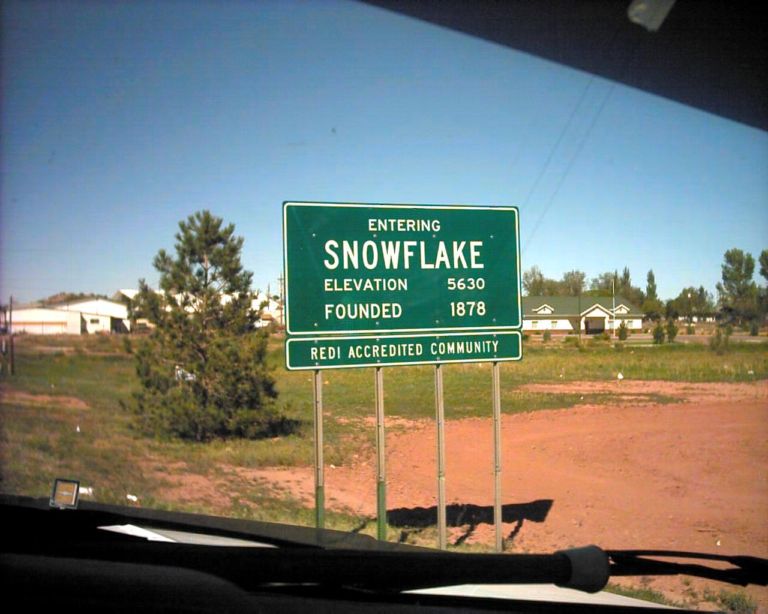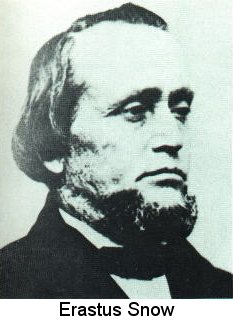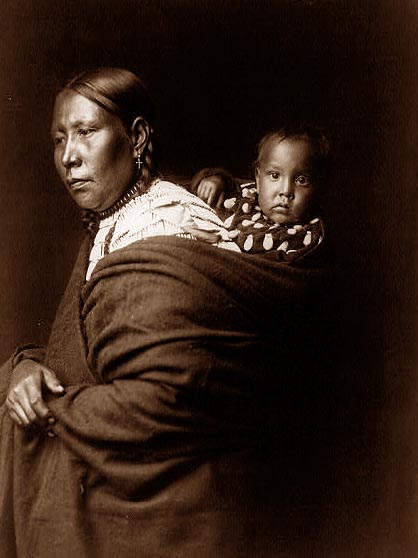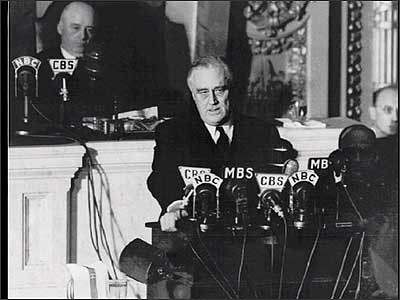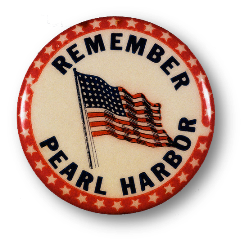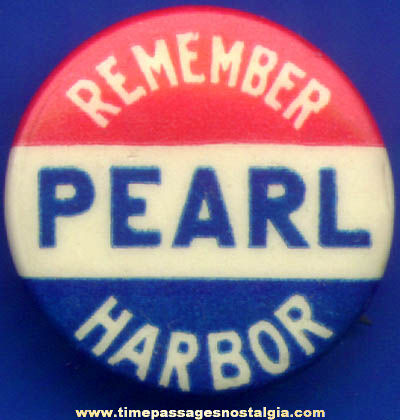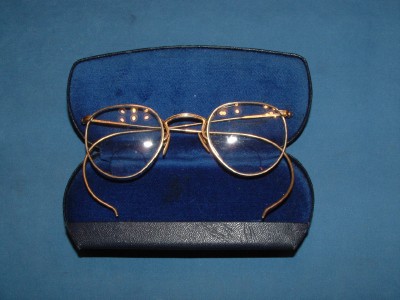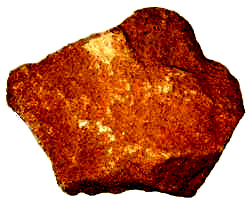
Head, Heart, Hands, and Health
As much as I liked school, I liked 4-H club more. Although I only spent four summers participating in 4-H, it had a powerful influence on my life, even influencing my choice of a college major.
( Insert: When at age 70 yrs old and teaching in China, I observed the vast difference between the rural poor and the educated urban parts of China, I thought that what they really needed were County Agricultural and Home Demonstration Agents like they had when I was a child and a really good 4-H club to go with them. )
One day near the end of the third grade year, all of the students from 3rd grade up, went to the auditorium to learn about joining the 4-H club for the summer. 4-H was an official government sponsored program run by the U.S.Agriculture Department. Clubs were offered in Clothing, Food Preparation, and Canning for learning home making skills. Agricultural skills were offered in dairy cattle, beef production, sheep, pigs, rabbits, chickens, and gardening. There were probably a lot of other options, but these are the only ones I remember. There were picnics and other social activities attached to being in 4-H. There were real meetings where you said the 4-H pledge with hand motions to go with each of the four words.
I pledge my head to clearer thinking, (touch your head)
My heart to greater loyalty, (put your right hand over your heart.)
My hands to larger service, (hands in front with palms up)
And my health to better living, (move your arms down body sides)
For my club, my community and my country. ("and my world" was added in 1973)
Volunteer parents were recruited to run the various clubs, which would meet in the volunteer's home or barn as the case may be. These volunteers would "teach" the children how to take care of cows or chickens or how to sew or cook. There were handbooks for the volunteers and for the 4-H members, as well. The projects got more difficult as you progressed from the beginning classes up through the intermediate and advanced classes. A local 4-H fair was held at the end of the summer with prize ribbons offered on the town level and, later in the fall, cash prizes and pins were awarded on the county level, probably at the County Fair in Holbrook. There was a Dress Revue where girls modeled their dresses and prizes were given out for the best dress.
Of course, I wanted to sign up immediately. There was one hitch, you were supposed to be 9 years old and I had just turned 8 in April. Eventually, my mother, who was one of the 4-H volunteers, got special permission for me to be in the program.
Beginning 4-H Club Sewing
 |
Flour came in 50 lb. cotton sacks with
printing that could be washed out,
giving you a piece of "free" cloth.
|
 |
| You could sew pajamas or anything but,the most common thing was to make dishtowels. They still sell flour sack dishtowels even though I doubt that they really were used for holding flour. |
One of the projects I signed up for was beginning sewing and we made three projects. The first was a machine hemmed dish towel made from a recycled fifty pound flour sack. We measured and cut it, measured and basted the hem by hand, and then, we hemmed it by machine. You didn't really use a sewing machine at the home of the volunteer, but she told you how and demonstrated it as the members sat around her living room. Since the clubs met once a week, you would sew at home during the week and bring what you had done to share with the others.
 |
My mother had taught me how to sew on her portable Singer sewing machine the summer after second grade, when I was only seven years old. Most of the other girls had treadle sewing machines at home. They were impressed that I sewed on an electric machine. In reality, a treadle is much more difficult, because at any moment with a twitch of your ankle it begins to sew backwards. If you want to sew faster, you have to move your feet faster. And another problem is that your legs have to be long enough to reach the treadle foot rest. You also have to coordinate all these feet movements, up and down, fast and slow, while your hands hold and guide the fabric and while your eyes are watching the needle so as to let your brain know what to do with both your hands and feet. Although I had the same eye and hand coordination problems sewing on my mother's electric machine, my feet had nothing to do I only had to push slightly with my knee to sew slowly and push a little bit harder to sew faster. (You can tell by my description of a treadle sewing machine, that I have used one, but it was later in a seventh grade home economics class.)
A Petticoat Slip
| My slip was like the one on the left. |
It's All Over But the Paper Work
At the end of each project the 4-H club members were to fill out an official form where you entered the cost of materials and the market value of what you made and how many hours you had spent making it. You then calculated what your profit was and how much per hour you earned. Why this is so clear in my memory, is because the cost of the pattern, fabric, bias tape, and thread, was, even then, more than the cost of a new slip purchased from Penney's store in Holbrook or from a Montgomery Ward Catalog. My mother said that my slip was much better than the ones from the store and that it would last much longer, although I never remember wearing out a slip before I outgrew it. She said that I should put down that the slip was worth $2.99. At least that is what my memory tells me. Even then the profit didn't begin to cover the hours it had taken me to make it.
So, at age 8, this was my second financial lesson. Sometimes "homemade" things cost more than "store bought," which Walmart has taught the current generation, in a big way. So, now, we have to call them "handmade," rather than "homemade," in order to give them value.
Cream-of-Tomato Soup
From Scratch
 |
| I had to search hard on the internet to find a plain bowl of soup. No one put dabs of sour cream or parsley on soup then, at least not in Snowflake. When I was a child, soda crackers looked just the same as now. |
I have memories of learning to cook cream-of-tomato soup in Allene and Carma Smith's mother's house. Although we raised tomatoes on a large scale and canned hundreds of quarts every year, my mother did not make tomato soup, let alone, cream-of- tomato soup. We learned how to cook something different every week all summer, but this tomato soup is the only one I remember, because it was new to me and it tasted really good.
Making Yeast Bread
The Red Ribbon Way
The Red Ribbon Way
 |
| Check out the texture and the holes. |
I probably learned to make yeast bread that summer between third and fourth grade, because I remember making the family's weekly six loaves of bread throughout fourth grade. My mother was teaching school in Snowflake that year and, probably, really needed my help. She would brag on me and say that I could make bread as good as a "grown woman." I was very proud of this until the next summer when I submitted a loaf of my bread to the 4-H fair and got a second place red ribbon. Up until that time I had only gotten blue ribbons for everything that I entered. I still remember the comment by the judges. "Texture uneven. Too many holes." I got a second red ribbon that year for a "packed lunch," for the same uneven textured bread used in the sandwich. I still have my stack of ribbons and I can't tell you, for certain, what any of the blue ones were for, but, I know exactly what the two red ones were for. Bread!
P.S
P.S
 |
| My bread didn't have this many holes. |
Yeast Cakes and Sponges
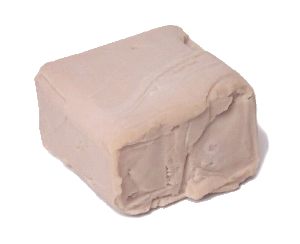 |
| A marvelous 1 inch square of bacteria |
To make yeast bread, you had to have yeast. My parents would have bought a year's supply of yeast, wholesale, in Phoenix, if dried yeast had been available. But it wasn't and so we had to buy it fresh. Bushman's store had a huge sheet-cake-like pan of yeast behind the counter. While you waited, they would cut a little piece about one inch square and then wrap it in butcher paper. It cost 5 cents.
My mother could make 6 loaves of bread and a pan of dinner rolls or a pan of cinnamon rolls with one of these five cent yeast cakes.
She did this by making a "sponge" that allowed the yeast to grow. Bread making took all day because, even after the sponge was ready, you added the flour and mixed the dough, which had to rise two more times before you put it in the pans and then it had to rise again, before it was ready for baking.
Sometime during all this, you had to start a wood fire in the stove and make sure the oven was up to the right temperature and you had to maintain the fire so as to keep the oven steadily at that temperature during the baking process. After the loaves were baked, you had to brush butter on the top of each loaf, so that the top crust would stay soft, and cover them with a clean dish towel until they cooled. Then they went into the bread drawer which was another custom built-in in our Snowflake house. (For the rest of my life, I've had bread boxes, but I have never had a house with a bread drawer, until last year when I moved to Provo. Now, I have a bread drawer, again. It even has a pie rack. Too bad, I don't still make yeast bread.)
A few years back when I was teaching in Xian,China, I really had a craving for some homemade bread. I remembered my mother's instructions from 4th grade. Since I had only one package of dry yeast, brought from home,

I made a "sponge," just like she had taught me, with warm water, milk, a little sugar, and a little flour. No recipe really needed! The bread turned out great. Besides loaves of bread, I made cinnamon rolls with raisins in them just like the ones my mother baked when we lived in Snowflake. I shared with all the American teachers and even with a couple from Australia. No one complained about the uneven texture or mentioned any holes.
4-H Poultry Project

During the second or third summer of 4-H, I signed up to do an agricultural project, Poultry, in addition to my homemaking projects. My parents ordered fifty baby chicks and they came by U. S. Mail crowded together into a flat cardboard box with air holes so they could breath, very similar to the ones in the picture. I have no idea how long it took for the mail to come from some farm in the Midwest to a post office there and to the nearest train depot and then travel by train to the Holbook train depot and then in someone's car or truck to the Snowflake Post Office and then wait there until my parents went to get the mail. The most surprising thing is that these baby chicks were still alive without food or water all that time. It is also surprising to me that you can still order baby chicks by mail, today.
My job was to feed and water the chicks. I suppose that I learned some 4-H lessons on how to care for chickens, but have no memory of such lessons. My father had raised chickens throughout his childhood and so he probably taught me most of what I needed to know in order to raise chickens.

It was not very long before the little chicks lost their fuzzy yellow feathers and began to look more like adult chickens. By the end of the summer, I remember that we sold all of the chickens to some one in town who would keep them for their eggs or use them for their meat. My end-of-project report for 4-H showed a much bigger profit than any of my sewing projects did. Another financial lesson learned.
Canning in 4-H



The summer after fourth grade, I signed up for canning as one of my 4-H projects along with sewing and cooking. This would not be new to me since my mother would "bottle" hundreds of quarts of fruit and vegetables every summer and I helped. Now that I was taking this as a project my mother said that I had to do it all by myself. I had to wash, peel, cook, bottle and be entirely in charge of it from start to finish. I remember that at age 9, I bottled 200 plus quarts of food all by myself from raw product to sitting on the shelf in our food storage room.
 |
| We had a food storage room very similar to this in our house only with shelves on both sides of the room and across the end. |
That same year my mother canned 700 quarts of just tomatoes and even more than that of other fruits and vegetables. Although my mother didn't usually count what she had canned, she did that year, because I had to count how many I canned for my
4-H project report. We had a large number of 2 quart jars for tomato juice and applesauce. We used pint jars for jams and jelly, but most of our canning was in quart jars.
It was a mystery to me, then, and still is today, why we call it canning instead of "bottling" or "jarring."
The Great Fruit Cocktail Episode
or
How My Mother Became a "4-H Mom"
How My Mother Became a "4-H Mom"
A few days later, my cousin who was also in 4-H, came to visit. My mother and I were sitting on the couch talking to her. I was so excited about fruit cocktail that I began to tell my cousin about it. My mother didn't want her to know, that we were doing this. I guess this was a sibling rivalry thing with her sister, my cousin's mother. Anyway, she pinched me on my leg and stood up. I was supposed to understand that this meant to "shut up," just like when someone, surreptitiously, kicks you under the table. But being too young or too naive for such subtleties I just said, quite loudly, "You pinched me." My mother said, "Sorry, I was just trying to stand up." I was surprised at her blatant lie, because it was a definite pinch. After my cousin left, she said that my cousin would go home and make fruit cocktail to enter in that category. My mother explained the pinch as her way of trying to tell me, "Don't talk about the new fruit cocktail category." There are "stage moms" and it looks like there are "4-H moms," as well.
My mother was right. When the 4-H fair came along, there sat my cousin's jar of fruit cocktail with little tiny pieces of fruit all chopped up, like the fruit cocktail you find in the cans at stores, but even smaller. My mother needn't have worried because I won first prize. The judges commented on the larger pieces and that the individual color of each separate kind of fruit was maintained. I don't know if my cousin got a ribbon or not.
A Giant Leap of Faith
 |
| The fence I jumped was a rounded wooden picket fence. I would have just climbed through this kind of fence. |
I was happy to go pick tomatoes for Miss Beasley. I got into her one seated coupe and we drove down the street. When we got there, she didn't park near the gate. No problem, I gave a little run, grabbed onto the wooden fence with both hands and flung myself over and landed easily on the other side. She smiled and said, "I guess you have done that many times," thinking that I was showing off for her. I had never done it before, nor had I seen my older brother do it. I might have seen it in a movie. I was a totally nonathletic child and have no idea why I would try such a thing for the first time in front of her. I have never done it since.
She was right about one thing. I was showing off. I really admired her and wanted to impress her. Seven years later, I, actually, enrolled in a triple major Home Economics program in college, that would qualify me to become a Home Demonstration Agent. Knowing her for four summers of my childhood was probably the most influential reason. On the internet I saw a picture of a girl who had just won the dress revue medal and underneath the photo it explained that she later became a home demonstration agent, herself. Role models are very powerful in a child's life.
When I went on the internet to see if I could find a picture of someone jumping a fence. I found an entire "how-to-jump-over-a-wooden-fence" article with six steps. As I read the article, I realized that, when I jumped the fence for Miss Beasley, I had done all of those six steps except number one, which was "Lay down your backpack." At the end of the article there was this post script:
" If you have any doubt
about your ability to jump the fence,
climb it instead."
I, obviously, had no doubts about jumping the fence, but, if I had thought about it, I would have had plenty of doubts. I just did it without thinking. If I ever acted, so impulsively, again, it never ended so perfectly.
My Last Summer in 4-H
World War II was almost over and my parents had decided to move to Phoenix. At the end of the school year they sold our house and we moved to the ranch just north of Snowflake for the summer.
We prepared for our new life in the city just as we always prepared for winter by canning food, making butter and cheese, and making soap. (see blogs on Milk and Soap) I still registered for 4-H and I suppose they assigned my mother as my leader. I don't remember what my projects were except for the sewing one. I made a pinafore dress with puffy sleeves and ruffles up over the shoulders and around the skirt. The ruffles were all edged with rick-rack that my mother insisted be sewn zig zag, so when it was laundered, it didn't fold over on itself and create an ironing problem.
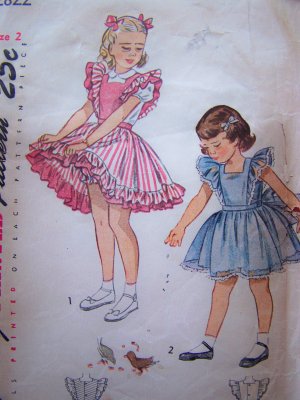 |
| My dress was like the one on the left only with puffy sleeves. and of course rick-rack on all the ruffles. |
The only problem was that there was no electricity at the ranch and we only had an electric sewing machine. The next year, my father adapted the sewing machine so that we could sew by having my younger brother, Wendell, turn a bicycle wheel with a handle. The wheel was mounted on a desk and around the rim was a cord made of strong string that attached to the wheel of the machine. My brother sat on a little stool and turned the wheel. speed was controlled by telling him to turn faster or slower or to stop. You could also put your hand on the machine wheel and the string would just slip around in order to stop exactly when you wanted. But this first summer we had no such contraption.
The solution to "no electricity" was for my father to drive me and the sewing machine to Snowflake and I would spend the day at Aunt Lydia's sewing on my dress. He would pick me up that evening and take me home. My great grandmother, Nora Savage, lived with Aunt Lydia and so I got to know her a little bit. There was a counted cross stitch sampler on the wall that she had made as a child and I was really impressed. Years later, as an adult, I learned to do counted cross stitch and thought about my great grandmother doing it as a child. I don't know how many days I spent at Aunt Lydia's, but eventually the dress was finished.
My First Hamburger
or
Half-Hamburger
The Snowflake 4-H fair was being held at the elementary school, both inside the building and outside on the playground. My parents dropped my sister and me off to attend by ourselves and would be back that evening to pick us up. Since this was an all day affair, the 4-H Club was providing lunch for some nominal fee. Knowing this, my parents had given us money for lunch. It turned out that it was not enough money for the two of us. So we decided to walk a block down to The Cafe,(that really was it's name.) It was the only place that served food in town. It had a sort of general store near the front door and the cafe part at the back. I had been inside The Cafe a few times to buy bread when we ran out of home made bread, but had never eaten there, before. As a matter of fact, our family did not eat out, ever. I can remember what I thought was my first meal in a restaurant and it was a year or two later. I guess I had forgotten about this meal. I can remember sitting on stools at the back and when we looked at the menu, we only had enough money to buy one hamburger and one malted milk. I don't know if we got fries or not. I was worried about getting back to the fair, since they had to cook the hamburger after we ordered it. After Mary Alleen and I shared the hamburger and the malted milk, we hurried back up the hill to the elementary school for the rest of the activities.I won several ribbons and my dress and some other projects were selected to go to the County Fair to be held later in the fall.
The End of 4-H, But Not Quite
That all day fair with the half hamburger was the last time I participated in a 4-H activity, but there is a postscript. After we moved to Phoenix, my father would commute back and forth from the ranch to Phoenix on a weekly basis. One week that fall, he brought home some certificates and at least two silver 50 cent pieces, and maybe a silver dollar. I had won several prizes at the county 4-H fair. He even had a little pin for me. I had won the Navajo County Dress Revue medal for the best dress and I wasn't even present at the fair. I don't remember what the other prizes were for. I was eleven years old and that was my last summer in 4-H. I still have the pin and the box of ribbons sixty-seven years later.


